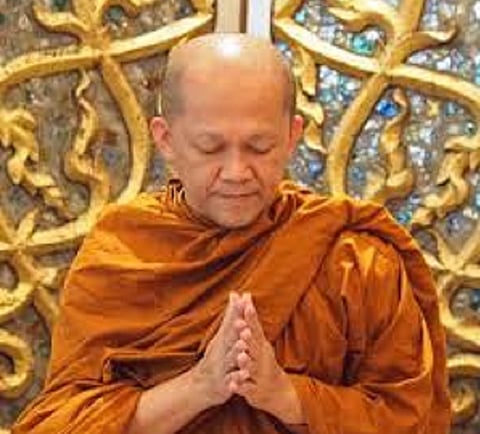Top Thai Buddhist leader to visit Pakistan
Islamabad seeks to promote historical Buddhist sites to attract tourists

ISLAMABAD: Thailand’s leader of the Buddhists community, Arayawangso is visiting Pakistan in April to participate in an inter-faith harmony event.
During the visit, the most respected leader of the Buddhists across the world will also visit the ancient Buddhist sites particularly in Swat and Taxila and interact with the local community there.
According to an activist working for promotion of Buddhist tourism in Pakistan, Imran Shaukat the Buddhist leader’s visit is taking place to bridge the distance among followers of various faiths.
“He is one of the few monks who have worked with the Muslims of Southern Thailand and has quite a good understanding of Islam,” said Shaukat adding, it [the visit] will inspire other monks and the Buddhist people of the region to visit Pakistan and see Buddhist attractions here.
With recent tourism-friendly steps announced by the Pakistani government, tourism promoters hope a large number of Buddhists will travel to Pakistan as the country is home to several historical Buddhist sites.
Days before Pulwama incident, Foreign Minister Shah Mahmoud Quraishi held a meeting with ambassadors and high commissioners of the Buddhist countries in order to explore the country’s untapped potential in this particular sector.
Buddhist sites
In that meeting Quraishi briefed the diplomats about the sprawling signs of Buddhism in various parts of the country, particularly in Khyber Pakhtunkhwa (KP), Balochistan and the Punjab.
According to Imran Shaukat, Pakistan is home to Buddhism sites and there were 1200 to 1400 big and small sites that have some historical link to Lord Buddha and his times.
“Unfortunately, we have not capitalised on it and this area by and large lies untapped and unexplored,” said Shaukat.
“Our region, Swat, is one of the eight places where Buddha’s ashes were brought and there is a site indicating that place in the valley,” said he adding a 30-metre reclining Buddha statue has also been discovered in Haripur.
According to Imran Shaukat Buddhism flourished in what is now Pakistan some 2,300 years ago, when the region was the centre of a Buddhist civilisation that took root under the rule of the Mauryan emperor Ashoka, leaving an abundant archaeological legacy of art and architecture.
The Gandharan civilisation, which lasted from the 6th century BC to 5th century AD is credited with creating the first carved images of Shakyamuni Buddha in stone, stucco, terra-cotta, and bronze, most of which were enshrined in monasteries and stupas in the region.
Terming the Foreign Office’s initiative as a wonderful step, he said he had been working on this project for almost a decade.
Secretary of Pakistan Youth Hostels Association (PYHA) while talking to Gulf News also said that Pakistan is a land of diverse climates and its rich cultural, heritage sites, green lands, pastures, snow-capped mountains, lakes, valleys, rivers and sea, and have the potential to attract tourists from every corner of the world.
“In Sindh we have archaeological sites of Mohenjodaro reflecting ancient civilisation as old as 2500BC in Punjab, Harrapa that traces its marks back to 2600BC.”
Sign up for the Daily Briefing
Get the latest news and updates straight to your inbox



